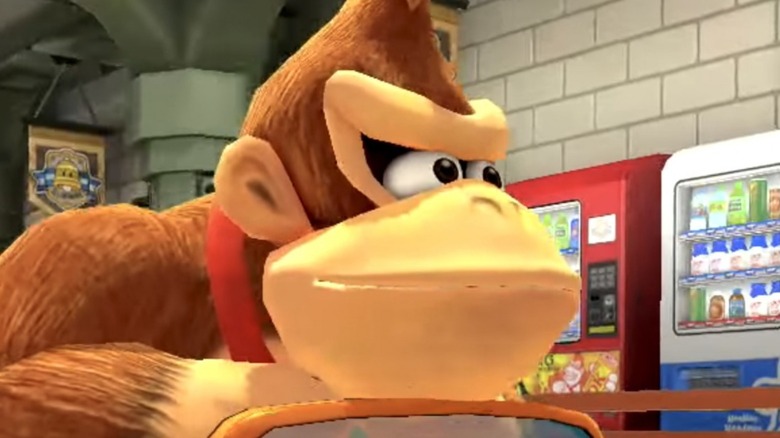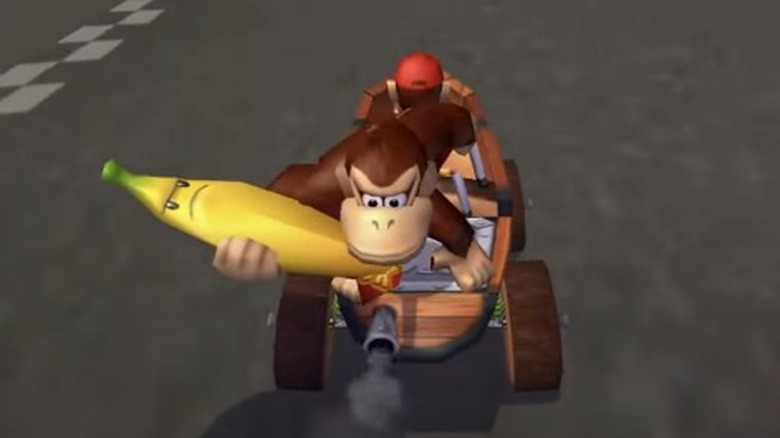Why Mario Kart: Double Dash Cut The Option To Counteract Bananas
Nintendo has cultivated a reputation as the industry standard for party games, which has inevitably meant keeping its flagship multiplayer games accessible to casual and competitive players alike. "Super Smash Bros. Ultimate" and "Mario Kart 8 Deluxe" fit this trend, even if "Smash Bros." has boasted some cheap characters over the years. "Mario Kart 8 Deluxe" producer Kosuke Yabuki has talked openly about the title's approach to accessibility. "There are people who only play the game on Christmas or New Year's, while others work to improve their skills every day," Yabuki said in an interview with Nikkei (translation via Nintendo Everything). "We're always mindful of balancing the experience for both types of players."
This philosophy has carried over from earlier entries in the series. One of the most common "Mario Kart" items received a drastic change from "Mario Kart 64" to "Mario Kart: Double Dash" to bridge the gap between casual and competitive players. The GameCube iteration also introduced a number of other alterations that stuck around. For example, players have the slim chance to dodge blue shells by drifting or using a mushroom (per Raven Dreamer), a first for the franchise according to Redditor Peterthemonster. Kiyoshi Mizuki served as director for "Double Dash," and elaborated on his priority to make the installment more accessible than its predecessor. This included tweaking the banana so players could no longer avoid spinning out upon colliding with it.
No escaping the banana slip
Speaking with Computer & Video Games back in 2003, Kiyoshi Mizuki recounted how experienced players in prior "Mario Kart" games could render bananas obsolete. In "Mario Kart 64," holding the break button at a certain time allows players running over a banana to remain steady and continue racing as normal. The effect even includes a music note appearing onscreen when performed correctly (via Crazyreyn).
"We have carefully selected the items or features so that the gap between the novice players and veteran players can be narrowed down," Mizuki said to Computer & Video Games regarding "Double Dash." The banana apparently represented one of those hurdles to making the title more universally enjoyable, hence why Mizuki removed the option to dodge its effect upon collision.
Along with game balance, the interview dove into cut ideas like the ability to link "Double Dash" to a Game Boy Advance. "The Legend of Zelda: Four Swords Adventures" requires link cables for its multiplayer mode, though the director did not elaborate on how "Double Dash" connectivity might have worked. Mizuki also spoke about how his team considered adding more courses to "Double Dash" before they decided to make the existing 16 courses stand out, a point of contrast compared to Nintendo's recent strategy releasing "Mario Kart 8 Deluxe" booster courses.
At its shell-tastic core, "Mario Kart: Double Dash" and the other "Mario Kart" entries have prioritized fun over expertise. Mechanics like the inability to slip past bananas unscathed stemmed from this approach.


